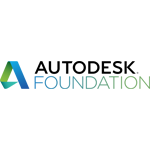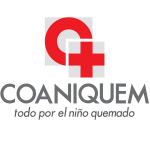Safe Niños Development Studio: Charity Retail Pop-Up
- Global Health
- Social Entrepreneurship
- Sustainable Development

Spring 2018
Inspired by the momentum of the Safe Niños Studio in the Fall of 2017 which engaged ArtCenter students to support the work of COANIQUEM – a nonprofit pediatric burn treatment facility in Santiago, Chile and Designmatters partner – this Designmatters Development Seminar challenged interdisciplinary students to design and implement an easy-to-assemble, pop-up structure/system that would be field tested on site at the Lollapalooza Festival in Santiago, Chile. To reach and engage new audiences about the mission of COANIQUEM and its new charity thrift store chain, the transformable modular pop-up structure would later be employed at trade shows, outdoor events and large festivals as well as inside COANIQUEM thrift shops.
This project was made possible in part by support from the Designmatters Educational Program Grant from the Autodesk Foundation as well as a grant from the Sillicon Valley Community Foundation.
Project brief
Inspired by the deep connections of the previous Safe Niños Studios, ArtCenter students were challenged to help the pediatric burn center reach a larger and younger audience by designing and implementing a modular pop-up structure that they and COANIQUEM staff field tested on site at the recent Lollapalooza Festival in Santiago, Chile.
Used at trade shows, large festivals or inside the COANIQUEM thrift stores, this travelling transformable pop-up structure would connect potential volunteers and donors with the country-wide chain of new COANIQUEM thrift stores through vibrant messaging, engaging design and powerful reminders of COANIQUEM’s important work with young burn victims and their families.
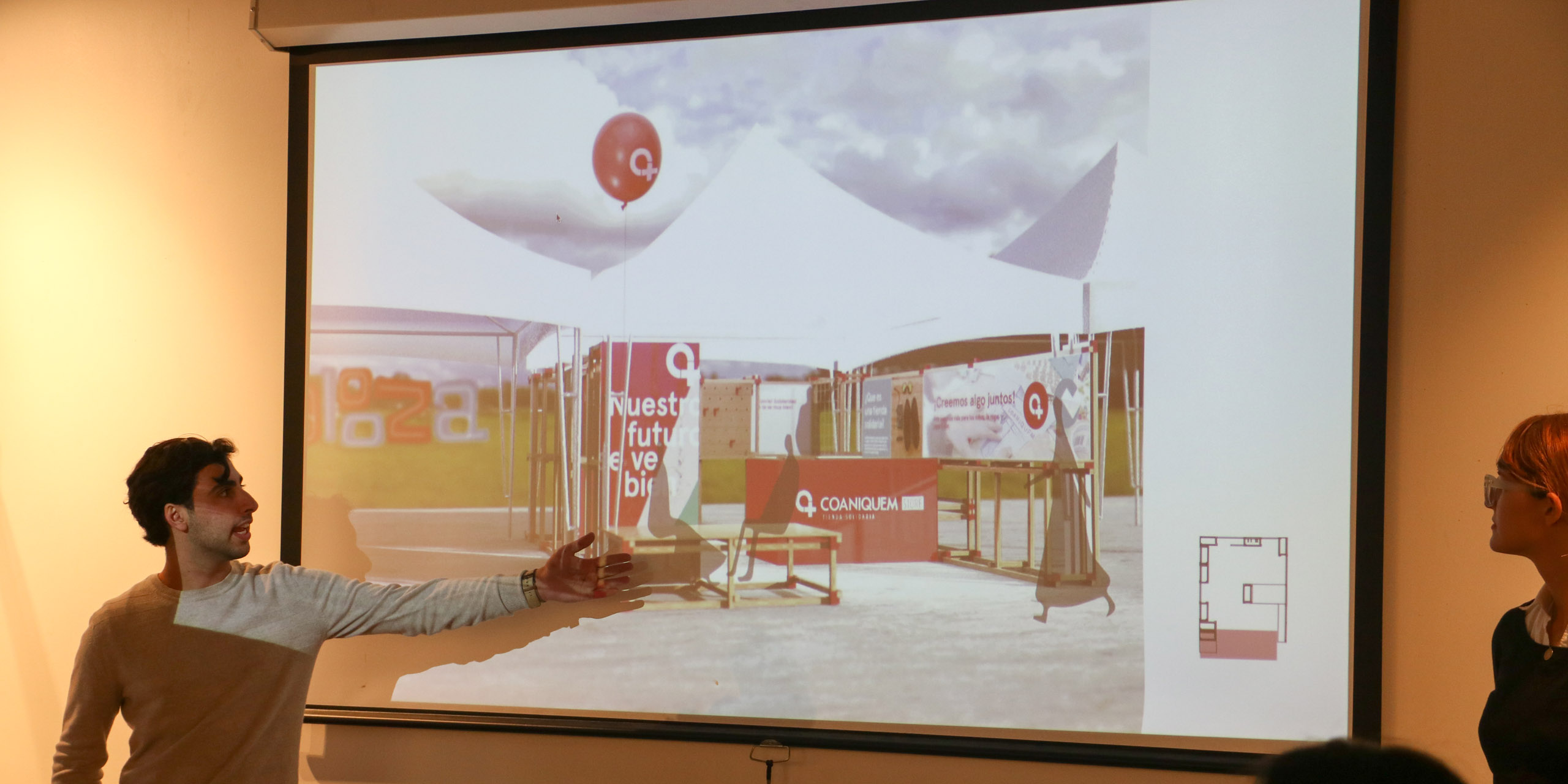
“COANIQUEM’s experience with ArtCenter has been such an amazing one for so many years. The pop-up you made has already had a second life and it will have a third life, fourth life, and so on and so on. You gave us energy, new ideas, new color, new concepts. Thank you for your humanity, commitment and friendship. As your program says, ‘Design matters.”
– Jorge Rojas Goldsack, Gerente Fundacion, COANIQUEM
Background
About Burn Victims and Latin America
Every year, more than 7 million children across Latin America are victims of burn accidents. In Chile alone, 100,000 burn accidents occur with the majority involving children under 5 years of age; burn injuries are the third cause of death in children under 15 years old.
About 90 percent of burn accidents for children happen at home even with parents at home. Youngsters are burned by hot liquids, open fires, electrical fires, fireworks and hot elements from heaters and irons. Recovering from a burn – whether small or large – can be painful and often involves extensive follow-up care that can take decades. The process is extremely stressful since many families live in faraway underserved communities.
For survivors and their families, a burn represents a psychological, emotional as well as physical scar that changes everyone for the rest of their lives.
About COANIQUEM
Since its inception in 1979 by Dr. Jorge Rojas-Zegers, COANIQUEM has cared for more than 100,000 children suffering from devastating and life-altering burn injuries; children and families travel to the Santiago, Chile facility from South American countries and the Caribbean Islands. Because of partnerships and international support, COANIQUEM can offer their services at no cost to families, many who live in poverty.
COANIQUEM treats 8,000 patients annually, with survivors and families living on the facility grounds for weeks and months as they undergo treatments and therapy sessions. The campus is located in a Santiago residential neighborhood and is accessible by public transportation.
Taking a holistic approach, COANIQUEM combines medical attention, restorative healing and comprehensive rehabilitation programs to treat physical and psychological scars. Trained professionals from a wide range of specializations are part of the COANIQUEM facility: medical doctors, registered nurses, physical therapists, occupational therapists, psychologists, social workers and music therapists. Teachers at the on-site school ensure that children of all ages who are undergoing treatments keep up with their education.
Currently, COANIQUEM is in the process of establishing a network of charity thrift stores across the country that would support its mission; volunteers, donors and shoppers all now can be considered part of the larger COANIQUEM family of compassion and care.
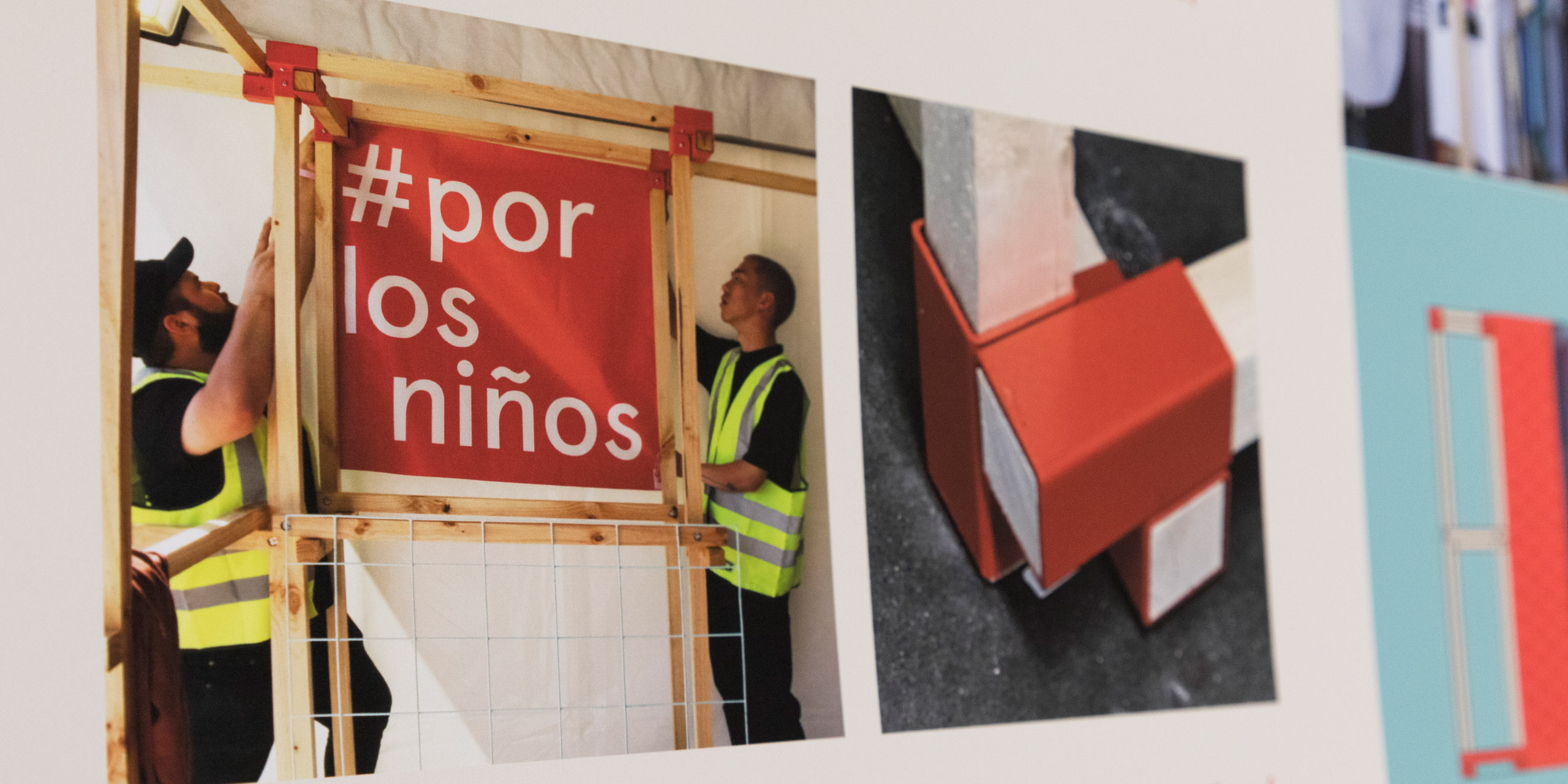
“It was really important for us to go to Chile and, not only get to see it, but we were there to build it, problem solve and troubleshoot with them. Some things you just can’t understand until you are working on it together, side-by-side. Our original intent was to create something that will grow with them, something that is scalable. Watching it come to life and knowing that it’s still living and will continue to live on, to me, is the most special part of this project and the most fulfilling.”
– Miranda Lapour, Student, Product Design
Research and Project Development
At the Fall 2017 Safe Niños studio final, one student team presented initial designs for a modular and transformable pop-up shop that could be installed in COANIQUEM thrift stores to highlight either a local artist/vendor/entrepreneur or store merchandise. Concurrently, the team also proposed a travelling trade show booth which could be employed at festival and community events to attract and encourage young people to be volunteers or donate/shop at the thrift store. Both concepts featured plywood and lightweight joinery construction with adaptable peg board designs featuring a combination of long metal pegs along with colorful graphics and eye-catching bold colors.
For this Designmatters Development Studio, students capitalized on those original design concepts with the goal of creating a life-size pop-up prototype to be used at one of the biggest festivals in Santiago, Lollapalooza. The structure could later be transformed and used at a COANIQUEM store or other community events.
At the studio kick-off, students defined the priorities needed to accomplish the task in the most efficient, economical and effective way, outlining steps and resources needed. A conference phone conversation with COANIQUEM helped shape priorities and design direction. Students then developed both messaging and structural objectives as they considered best practices to capture the attention of a youthful audience at a crowded festival scene.
Messaging objectives would introduce the idea of thrift culture to a country where the concept is in its infancy. The pop-up also needed to draw connections between the treatment facility and the new stores as well as invite volunteers, donors and shoppers. Vibrant messaging could also educate about sustainability and burn prevention. Students collaborated with COANIQUEM staff and volunteers on how best to present social media messaging regarding the pop-up’s presence at Lollapalooza.
Concurrently, students needed to hammer out the structural objective details of the pop-up given the available budget of the project. It needed to be multipurpose with transformable fixtures, scalable to fit many type of possible environments, made from locally sustainable materials and easy to (de)construct and transport.
Students were given the dimensions of their festival booth which provided them a framework to begin designing the pop-up. The booth would welcome guests for a crafting experience, enable them to do a little thrift shopping as well as learn more about COANIQUEM’s thrift stores and how they can be a part of the COANIQUEM family of volunteers.
Since the COANIQEUM structure would be located with all the other nonprofits in the Lolla Cares space of the festival, attractive messaging would be integral to capturing attention. Super graphics, large engaging photos and hand drawings from COANIQUEM’s child patients were used to make the booth eye-catching and attractive to festival goers.
Communicating regularly with COANIQUEM staff via WhatsApp as they sought ways to maximize effect with minimum resources, students also drew upon the expertise of ArtCenter faculty and staff that has experienced creating large-scale pop-up stores and story-driven spaces.
Since they would send building directions to COANIQUEM staff/contractors (many who speak little English) ahead of their travel, students needed to diagram the construction with easy, IKEA-like instructions, focusing on simplicity and clarity. Students designed on paper, created small-scale models and experimented with structural elements, devising a construction strategy that meshed with messaging. Additionally, they ideated ancillary items and interactive incentives that could be used as giveaways at the festival.
Students presented their designs, materials, fabrication methods and model as well as an implementation plan to ArtCenter faculty who offered practical feedback and insights into this large international undertaking.
Revising designs and honing strategies, students finalized all the details necessary before embarking on their trip to Chile. They collaborated closely with COANIQUEM staff/contractors to make sure all the necessary elements, materials and tools would be onsite.
Additionally, students created giveaways for the festival and hand screened 50 tote bags as well as gathered messaging materials for button-making that was planned as a booth activity.
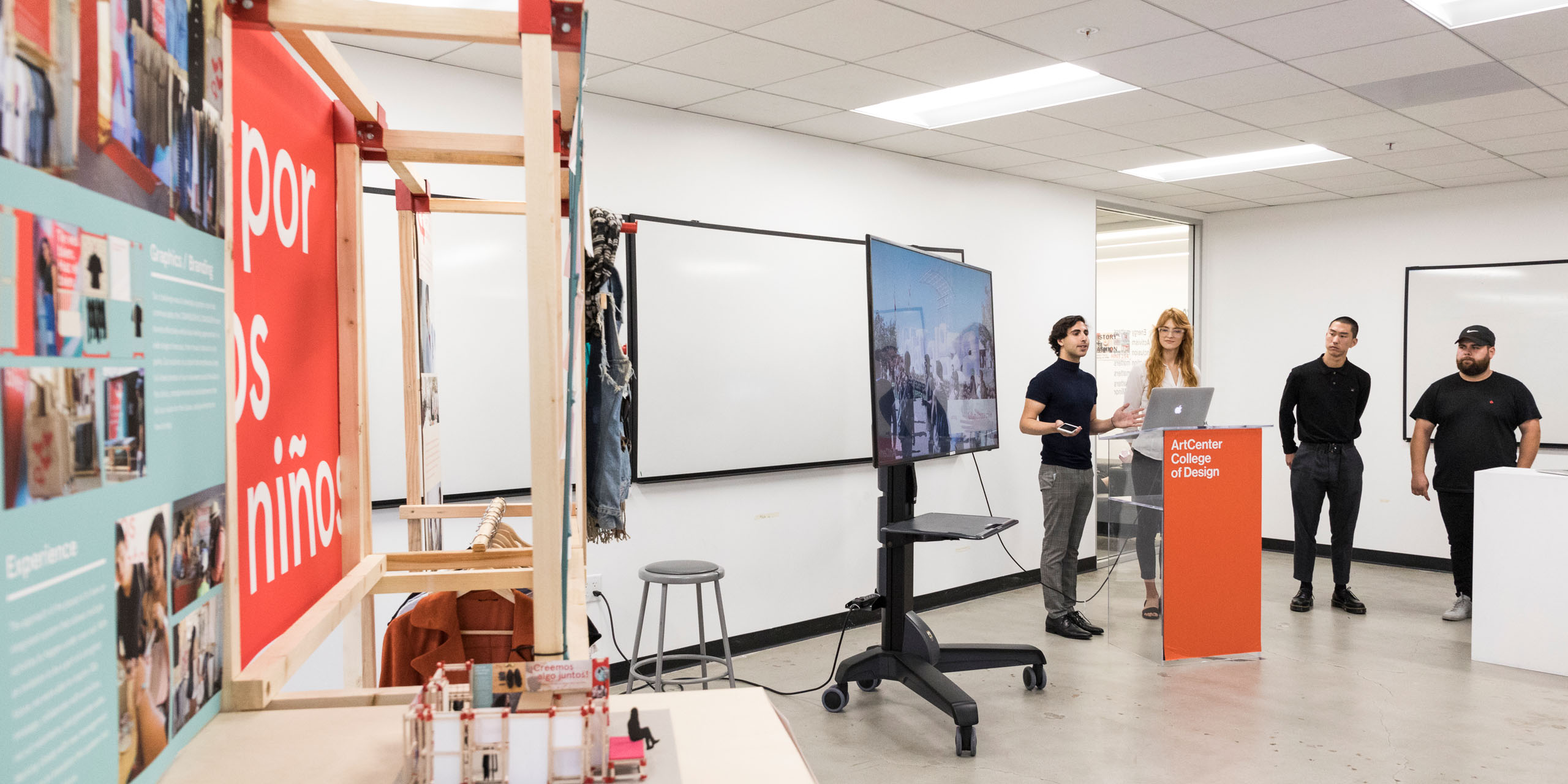
“I told the students at the end of our trip: ‘In the end you all want to be great designers, and you will be. But you also want to be good humans, people that others will want to work with.’ You see, it’s not just the ability to imagine beautiful things, it’s also having the ability of communicating and working with and for people that is at the heart of being a great designer.”
– Stella Hernandez, Instructor, Environmental Design
ONSITE AT LOLLAPALOOZA IN SANTIAGO, CHILE
The students arrived in Santiago and were excited to meet their long-distance staff/contractors and collaborators in person. Originally, the goal was to create the pop-up onsite at Lollapalooza, but the team realized that it would be better on opening day of the festival to put it together at COANIQUEM and transport it from there.
As they ran through the initial building phase of the pop-up on the COANIQUEM campus prior to installation at Lollapalooza, students and staff realized alterations were necessary. Students learned the value of preparation and proper tools as well as how to make last-minute adjustments using available resources. The tight deadlines also provided the students with the real-world experience of working under pressure.
For the entire three-day weekend festival, students joined volunteers at the pop-up handing out ancillary products, answering questions and helping ring up sales of thrift clothing. The students initially thought that festival-goers would not be interested in shopping, but this assumption proved wrong. Students and volunteers quickly realized they needed to transform part of the pop-up to provide more merchandise displays.
Students discovered that their tote bags were popular, but the button-making experience needed a creative personal touch. Festival-goers used the button maker and, instead of using the pre-designed COANIQUEM messaging, ripped up parts of the official Lollapalooza program to make their buttons unique and memorable.
At the end of the experience, students, staff and volunteers disassembled the pop-up and brought it back to the COANIQUEM campus for storage – but not for long. Soon, the structure was sent to a nearby COANIQUEM thrift store to enhance merchandise displays.
Students traveled back to the United States where they created a presentation and project deliverables to COANIQUEM, department chair and ArtCenter faculty. They considered how effective the pop-up was and examined the challenges and lessons learned, noting strategies that would have improved the construction and overall experience. They also ideated on how the pop-up could be used for future events in parks, plazas, trade shows and in-store.
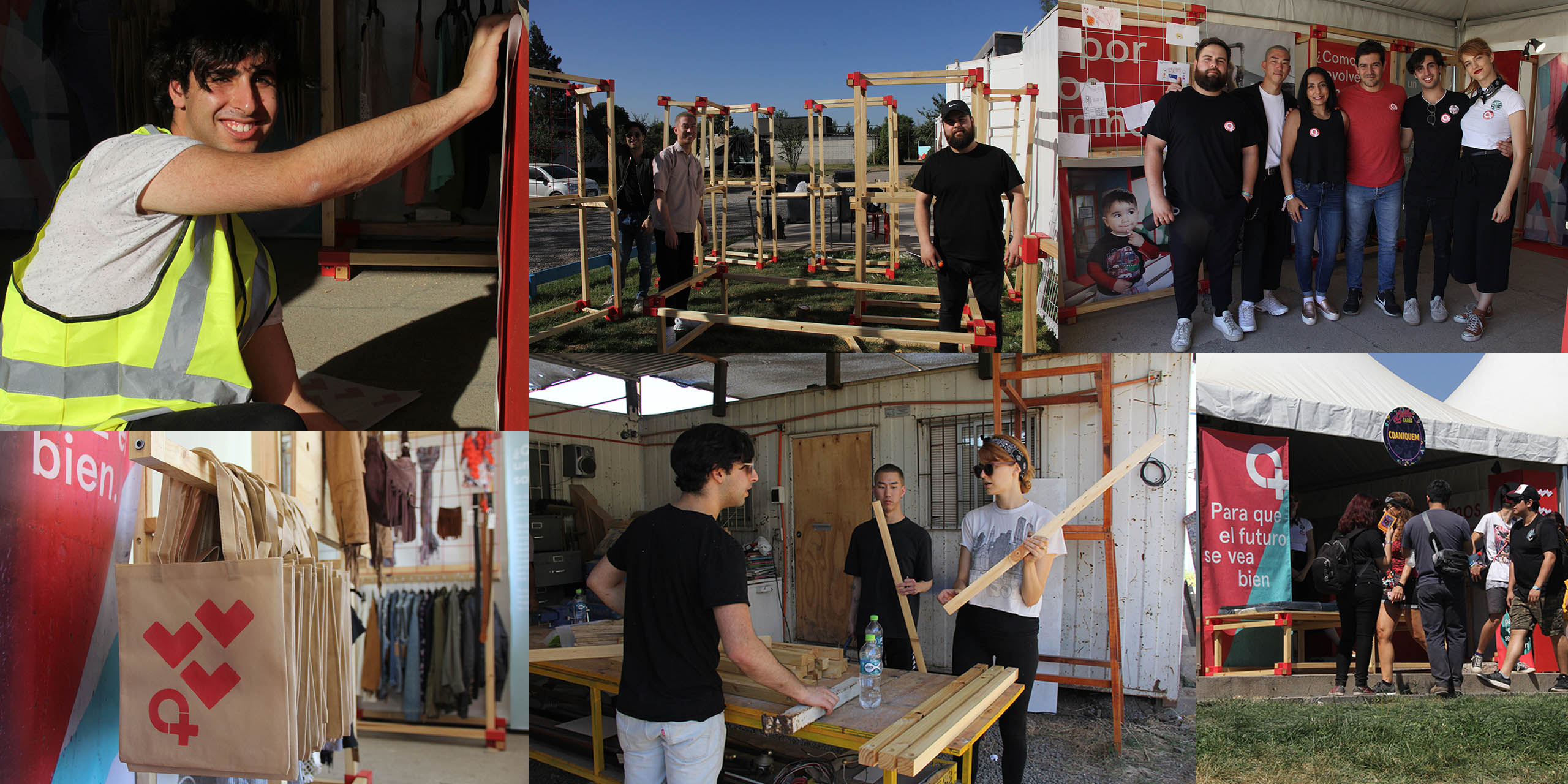
“It was important to make something that could be used by everyone. We tried to make sure it could be adaptable on the spot. It’s only three measurements and only one joint. Nothing else. It becomes more of intuitive type of building – there were no errors we encountered – they were more like adjustments. We used everything we had.”
– Andres Zalvala, Student, Environmental Design
Project Outcome
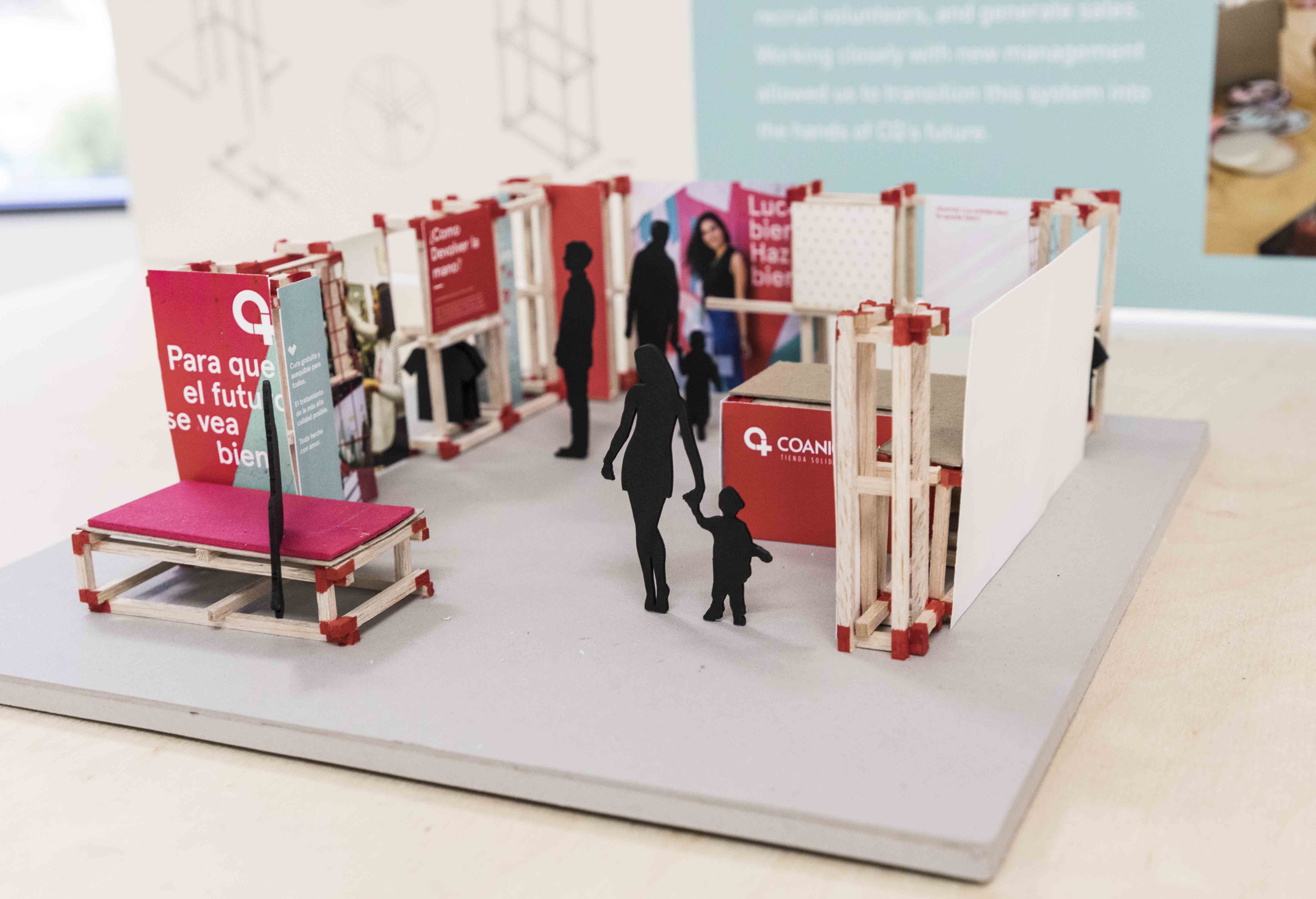 close
close
Pop-Up Shop
Read more
Created from economical and local materials found in Santiago, the pop-up structure consisted of a 15 x 15 feet plywood frame that features 11 modules. Spider-type nuts easily connect to 2 x 2 wooden pieces to create walls, low shelves and other open configurations. Wire boards, pegboards and overhanging brackets provided options for hanging clothes racks or other messaging items.
Large plywood boards were colored with the distinctive COANIQUEM red color.
Walls were graphically divided by messaging: fashion (thrift store shopping), the mission of COANIQUEM, and the future/sustainability.
The outer structure featured a post-it wall that encouraged interactive messaging. Hand drawings from COANIQUEM patients decorated the outward-facing wall section as did large engaging photographs and the familiar COANIQUEM logo/red color.
Inside the pop-up, racks and displays of sale clothing were positioned near an acrylic mirror with the message: Smile, Solidarity Looks Good On You. Thrift shopping exceeded expectations and extra display space were easily created to accommodate the interest.
Promotional tote bags were distributed and well-received. Button making area encouraged creative design with guests often using their festival program to craft one-of-a-kind mementos.
An upcycled rest space provided guests with a moment away from the noisy crowds to take in a moment of peace.
